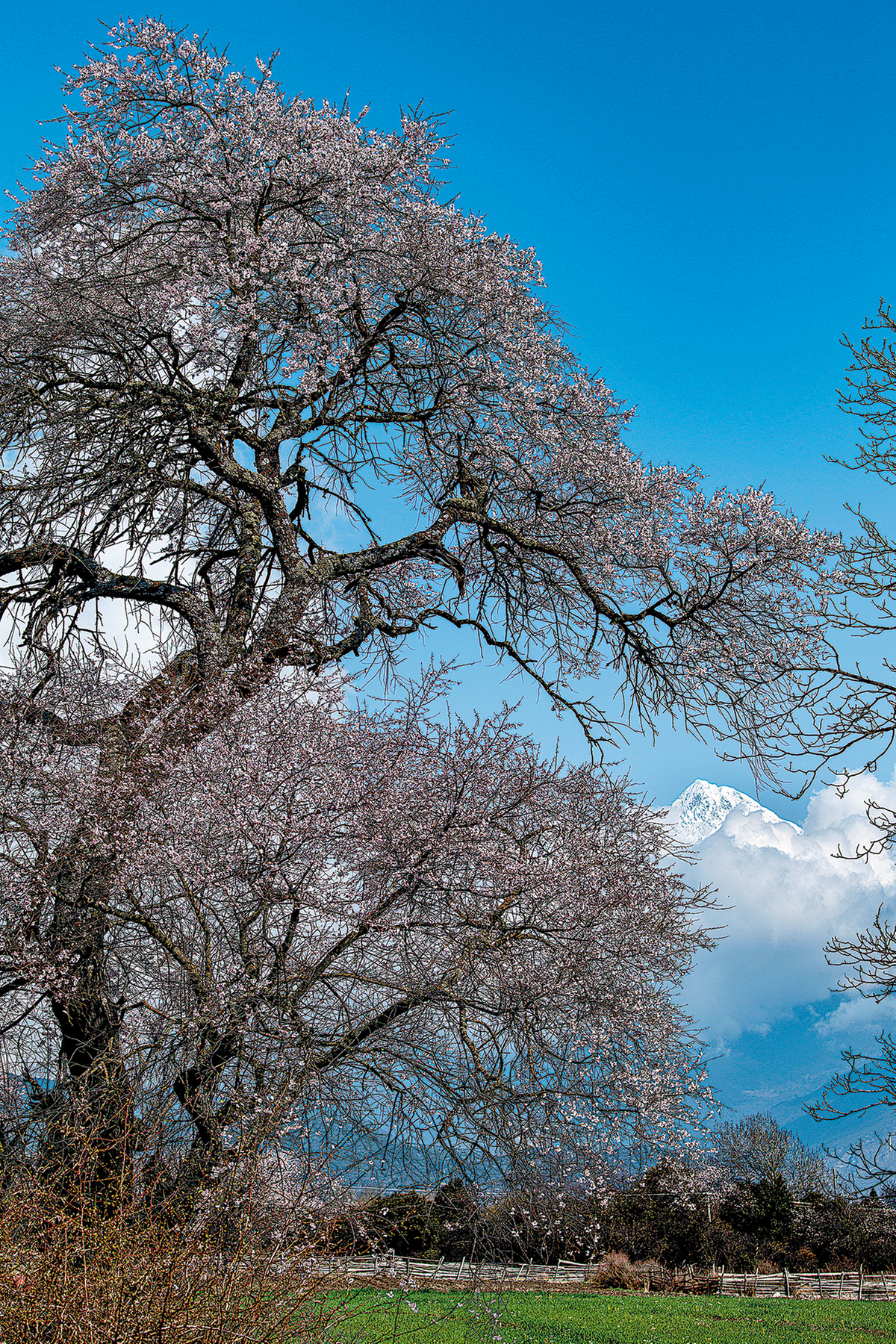Village reaping rewards from boom in tourism
Updated: 2021-08-02 (China Daily)  Print
Print 



Blooming peach flowers attract visitors to Bomi county, Tibet autonomous region, in March. GAO JIAN/FOR CHINA DAILY
LHASA-Villagers in Kala, in the Tibet autonomous region, used to be annoyed when their peaceful lives were disturbed by trespassers hopping in to savor the quaint peach blossoms around their houses and farms.
Dubbed the "village of peach blossoms", Kala boasts more than 1,200 wild peach trees, with the oldest being more than 600 years old. The village is surrounded by pink peach blooms in spring. "About two decades ago, tourists would sometimes trample on crops to reach the flowers, and villagers used to have quarrels with them," said Penpa, a local village official.
Locals built fences to curb irksome trespassing. "But the peach blossoms here were so beautiful that tourists were willing to risk climbing over the fence to take photos."
The village committee later figured out a way to make both villagers and tourists happy-developing tourism. Locals then dismantled the fences and built sightseeing lanes to welcome tourists to enjoy the scenic beauty. The committee also made arrangements for villagers to sell local products and traditional foods to tourists, and it collected some environmental protection fees from the visitors.
Thanks to the boom in tourism, the earnings of the locals started to increase.
The local tourism department began holding a peach blossom festival in Kala in 2002. Over the past two decades, locals there have become wealthier, embracing moderately prosperous lives, while the peach blossoms of the village have gained fame all over the country. Last year, the total income of Kala reached more than 11.5 million yuan ($1.78 million), with its per capita disposable income exceeding 31,000 yuan.
In addition to peach blossoms, the snow-capped mountains and glaciers in remote Tibetan villages have also generated wealth for the locals.
Norbu runs a homestay in Sursum village, Mainling county. It is located at the foot of Mount Namjagbarwa, the highest mountain in Nyingchi, a prefecture-level city, situated 7,782 meters above sea level.
Norbu, who was once struggling with poverty, took a loan of 500,000 yuan in 2017 to transform his residence into a homestay. Offering a picturesque view of the snowy mountains and glaciers, Norbu's homestay became very popular.
He also sells local products such as matsutake and caterpillar fungus to tourists. "I paid off the loan and shook off poverty. Now, I live a well-off life with the other villagers," Norbu said.
Bomi county-home to the largest glacier group on the Qinghai-Tibet Plateau, with over 2,000 glaciers-has seized the business opportunity.
The county has created a sightseeing route traveling across glaciers. It has witnessed more than 100,000 tourists annually over the past several years. Bomi has adopted a series of strict measures to protect the glaciers and block human interference while helping locals reap the benefits from tourism development.








